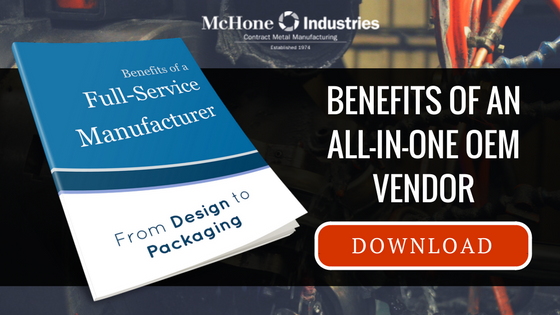 For decades, manual bending was the standard for reliability in tube production. Today, some old-school engineers still cherish the simplicity of a purely mechanical tool. Yet most tubular steel manufacturers offer automated tube bending by now.
For decades, manual bending was the standard for reliability in tube production. Today, some old-school engineers still cherish the simplicity of a purely mechanical tool. Yet most tubular steel manufacturers offer automated tube bending by now.
So which is best for your project -- old, faithful bending or the automated perks of CNC bending?
Manual & CNC Bending: What’s The Difference?
Manual bending, while not what it used to be, is still the process of choice for some manufacturers. Manual benders use compression by applying a wiper die that sweeps the radius of a bend die, forming the tube to a specified degree.
CNC (computer numerically controlled) bending machinery is, of course, automated. The user inputs his desired specifications via a computer interface, and the machine does its thing. Rinse. Repeat.
CNC bending is considered a more efficient process than joint welding. But does it surpass the standby manual method, too?
Manual Vs. CNC Bending
1. Accuracy
Manual: When bending manually, operator error is a threat. Producing quality bends depends on the operator’s skill level. Any slip-up will end up in the waste heap.
CNC: Automated benders adhere to a computer program that never deviates, as long as your vendor’s operator inputs the correct specifications. Barring a case of fat finger syndrome, you’re getting better accuracy with CNC.
2. Time
Manual: Capacity is limited when more human work is involved. Sixty parts per hour is a reasonable expectation for a cycle on a manual 10-bend fixture.
CNC: Computer automation provides lightning-fast efficiency: Perks include:
- Quick setup
- Fast changeovers
- Faster throughput
- Shorter cycle times
CNC benders can take on large quantities in a single production step, cutting unnecessary transitions from the manufacturing process.
If that wasn’t enough, because they’re more accurate than humans, machines produce fewer defects that require time-wasting redos.
3. Cost
Manual: Bending a tube by hand is very economical up front. Unfortunately, it’s not cost-effective. That said, if you require a short run, manual bending could be worth it
Another expense that can pop up? If your part is complex and requires a more advanced manual machine, it may require custom tooling.
CNC: The assumption of old-school metalworkers is that because it involves fancy machines, CNC bending must be super costly.
The efficiency of CNC bending machines results in shorter run times, actually saving you production costs. Their ability to take on an entire production step also keeps you from taking on the cost of transitions.
Furthermore, most bends can be performed by the machine and checked afterward by a technician. This process cuts down on labor costs throughout your bending project, especially if it’s a high-volume order.
4. Capabilities
Manual: The old-school way is not built for high production rates or repeatability. Although machines exist that can handle 2" pipe, hand benders are generally suited for tubing that’s 1" or less.
The complexity of bending and number of bends allowed varies by machine. Operator skill also plays a big part.
CNC: This method allows for more intricate part forming and more versatility in general. Your vendor can set the bend radii to fit your specifications -- every time. The computer interface gives the operator major control over the bend.
5. Quality
Manual bending: These benders often are built to zero-tolerance gauges, so you CAN get consistent parts in production. But tube accuracy and repeatability depend on the skill of the tool builder and machine operator. To get a great part, you’ll need to employ a vendor who’s got extensive experience in tube bending.
CNC: The computers are programmed for a variety of quality assurance protocols and fixes, which they perform automatically. CNC machines have programmable speeds that optimize the process and eliminate defects. Your vendor can even program them for automatic measuring and springback correction.
The Verdict
If you haven’t been using CNC services for your tubing projects, ask your manufacturer about this capability.
No matter the method you choose, your product will suffer if you specify the wrong material. Properties such as wall thickness, hardness, and tensile strength can have direct impact on your project’s outcome.
Or, again, your manufacturer may be able to get involved early in the design and prototyping phase to work out the kinks.



